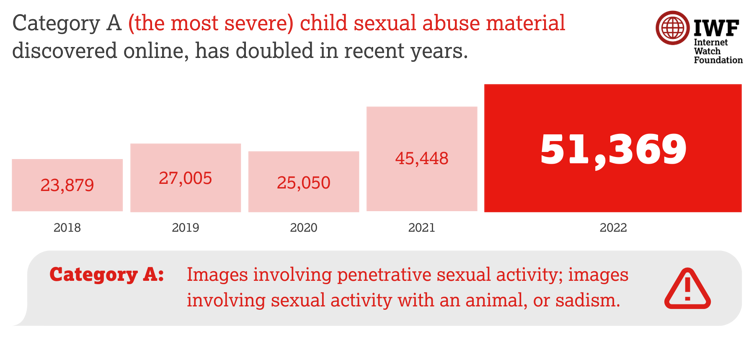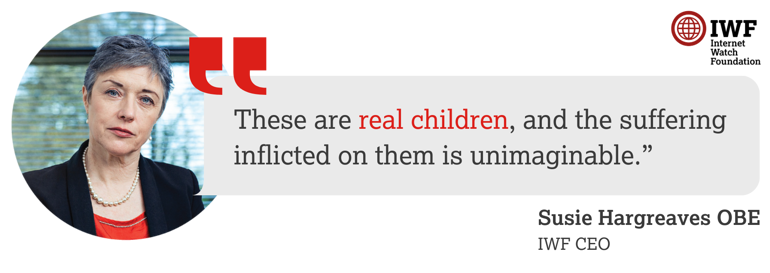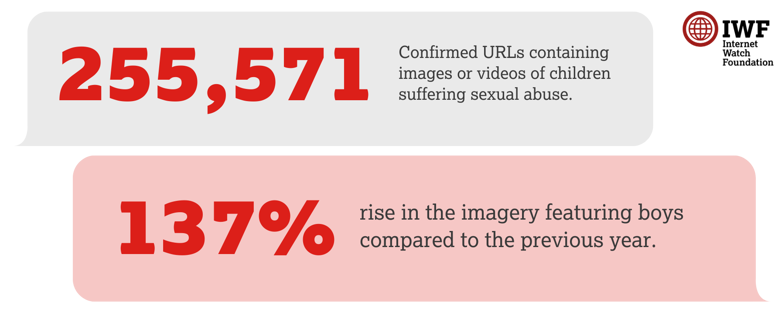Issue of the Week: Human Rights

“‘Extreme’ Category A child sexual abuse found online doubles in two years”, IWF, Annual Report
In the US, we are heading into the Mother’s Day weekend. It’s a corporate, money-making, emotional-holic day that never existed until it did and now is a required performance addiction.
There is a Children’s Day too, but you’d never know it. Of course how many people have read the Convention on the Rights of the Child? Required reading if there ever was any. And how many people know that the only two countries that haven’t ratified it are the US and Somalia?
So what is a real mother (or father, related to the other high holy day soon approaching)?
Someone whose entire physical, mental, emotional and spiritual being is dedicated to the protection and nurturing of all children.
Entire. For all.
Pay any price, bear any burden, for this.
The only meaningful life, the only path to true personal liberation
All other relationships of even a modicum of healthy interaction are based on this primary value. Starting with our relationship with ourselves.
Until this is the overwhelming majority of people, there has been no meaningful evolution to even the minimum requirement of being decent beings, and children, the most vulnerable of us, the future of us, our most basic responsibility, will suffer unimaginably and have their lives devastated. Far more than half of them on this planet to be sure, far past the tipping point of physical, mental, emotional and spiritual viability as a species. And we will, sooner rather than later in this most vacuous and self-centered moment yet in human existence, finally achieve the deserved end of our species.
Or we could choose to do the other thing.
We could choose to be real mothers, or fathers, or baseline decent adults.
It’s an understandable but far past anachronistic impulse in many to think they have to have biological children or have children in any way or that their children are more important than others, or at the least that since they are responsible for taking care of their children, it is somehow natural to place them ahead of others. The emphasis on their is on the possessive. The natural attachment that shoud occur is from the child to the caregiver, because the experience of real love is of giving to the child, not getting or having.
This is shorthand for what we have written about often. But in the end if we sacrifice the well being of any child over another, we continue to feed the dynamic that ultimately destroys all.
The worst pandemic in the world and in history is the sexual abuse of children. Joined by other abuse and neglect, the statistic of at least half the children on earth is well established. Sexual abuse of a child is a unique violation that needs no further explanation. Always underreported, the facts always get revealed as darker.
And incomprehensibly, as we’ve pointed out often, a plurality of child sexual abuse is comitted or enabled by family members, often parents, then other family members or trusted adults.
And as we’ve pointed out for some time now, the sexual abuse of children is growing exponentially worse because of the internet.
One of the most important agencies in the world, one of the most responsible for tracking and fighting this, is the Internet Watch Foundation (IWF) in the UK.
In their new Annual Report, the trend from hell has continued. A doubling of abuse images every year.
As we reported some time ago, The New York Times expose Exploited covered this ground more broadly, as never before. Every image a crime scene. Millions, hundreds of millions now, abuse images every year.
In March 2020, as the Covid pandemic was starting to rage, we noted the potential horror of what was to come with Covid, and then launched into a new special podcast by the Times on the worst ongoing pandemic in history which linked to all our posts on the unprecedented front page Sunday Times Exploited pieces, in “A Criminal World Of Child Abuse.”
Why has this continued?
As the Times put it in a phrase, because we don’t want to look in the ugly mirror.
If we actually cared about children a wit beyond sentiment and expression, which would mean fighting this like fighting the Nazis in World War Two until unconditional surrender, then we would force the internet companies–all of them and all of their enablers, to stop it. They don’t because of money. They could single-handedly eliminate most of it. They hide behind privacy issues that fuel the sale and use of their products. And with using those very words as if defenders of bills of rights who would change positions instantly if profit instructed, they enable pulling down the shade over the ugly mirror. Privacy with exceptions could be done easily. Of course there’s some trade off. Like in all life. The delusion of complete freedom is the ultimate psychosis. You can’t yell fire in a theater as the famous example goes.
The IWF and others have championed bills in the UK and EU parliaments to begin to do what has to be done. (Even if they are muddied somewhat by the support of some of the offenders, because, mainly, they don’t have the goverment funding they should in our view–although independence from this in pushing to impact policy and in working with government agencies has its place, the same point applies to association with internet companies in reverse–however, the association helps IWF put pressure on these companies to make some progress and do better than they likely otherwise would; its complex and this is just a synopsis of our observations)
Here’s an excerpt from The Guardian in London last year (9 Aug 2022):
The IWF’s chief executive, Susie Hargreaves, said self-generated abuse should be “entirely preventable”, which should include educating parents, carers and children about technology use and sexual abuse within the home.
“Child sexual abuse, which is facilitated and captured by technology using an internet connection, does not require the abuser to be physically present, and most often takes place when the child is in their bedroom – a supposedly ‘safe space’ in the family home. Therefore, it should be entirely preventable,” she said. …
Self-generated child sexual abuse imagery is typically created using webcams or smartphones and then shared online on a growing number of platforms. The IWF says children are groomed, deceived or extorted into producing an image or video of themselves. …
Hargreaves added that the UK online safety bill was essential for setting a regulatory example around the world. The bill, whose progress through parliament has been delayed until the autumn, requires tech firms to limit the spread of illegal content such as child sexual abuse images.
Momentum is gained, reistance is fierce, and the batle continues. The entire internet, cyber, digital enterprise world (and increasing AI aspect of this) is all part of the problem. When you see any of these entities stand up and scream that all must change to save babies from being raped and see them going from mouthing this and taking half measures (which they all do as a basic necessisty of branding) to changing and demanding to unmask the privacy of predators which means as with everything else that everyone’s privacy (already virtually nonexistent) will be dilluted in part–but with the protection of never allowing anything to be revealed except related to those who abuse and enable the abuse of children. Governments, of course, need to enforce this. Companies are absolutely reponsible to do so themselves, and should (and we believe will ultimately) be held accountable. But government policy is the only guarantee. Which means all of us demanding it.
The writer of this post today, who will remain unidentified, was sexually abused as an infant. There are hundreds of millions of us. This is the ugliest mirror of all. Even other survivors sometimes have a difficult time really, truly, deeply looking at this. This barbarity of barbarities must be stopped and this must be screamed from everywhere to everywhere, all the time.
We’re just getting started
The new IWF annual report states that “‘Extreme’ Category A child sexual abuse found online doubles in two years.”
Here’s an excerpt:
The amount of Category A child sexual material discovered online has doubled since 2020, with newborn babies and toddlers among the victims of the most severe kinds of sexual abuse, new data reveals.
The Internet Watch Foundation’s annual report, published today (April 25) shows that, in 2022, a record-breaking 51,369 of the webpages it took action to remove or block from the internet contained Category A child sexual abuse material.
This is the most severe kind of imagery, and can include the worst kinds of sexual abuse, including the rape of children, babies, and even newborns, as well as acts including bestiality, or sadism.
Here’s the report:
‘Extreme’ Category A child sexual abuse found online doubles in two years
Published: Tue 25 Apr 2023
- In 2022, the Internet Watch Foundation (IWF) discovered more Category A child sexual abuse material online than ever before. This material contains the most severe kinds of sexual abuse.
- The number of webpages containing Category A material found by the IWF has more than doubled since 2020.
- Commercial pages exploiting sexual abuse of children have also doubled since 2020, contributing to increasing levels of “extreme” content.
- Warnings over public safety with people “only one click away” from extreme abuse imagery.
- The charity says more companies than before are now signing up to take services to clean up the internet.

The amount of Category A child sexual material discovered online has doubled since 2020, with newborn babies and toddlers among the victims of the most severe kinds of sexual abuse, new data reveals.
The Internet Watch Foundation’s annual report, published today (April 25) shows that, in 2022, a record-breaking 51,369 of the webpages it took action to remove or block from the internet contained Category A child sexual abuse material.
This is the most severe kind of imagery, and can include the worst kinds of sexual abuse, including the rape of children, babies, and even newborns, as well as acts including bestiality, or sadism.
The amount of this kind of content has doubled since 2020 when the IWF uncovered 25,050 pages containing Category A abuse. The total number of URLs in 2022 containing Category A child sexual abuse material is higher than the IWF has ever seen before.
Proportionally, Category A material now accounts for 20 per cent of all the content the IWF sees – up from 18 per cent in 2021, and 17 per cent in 2020.
The IWF is the UK organisation responsible for tracking down child sexual abuse imagery online. It works alongside industry and law enforcement to make sure this content is swiftly removed from the internet.

Susie Hargreaves OBE, Chief Executive of the IWF, said: “We have seen criminals looking to exploit more and more insidious ways to profit from the abuse of children.
“I don’t think I can overstate the harm being done here. These are real children, and the suffering inflicted on them is unimaginable. They are being raped, and subjected to sexual torture, and criminals are making money off the back of that. It is truly appalling.
“Last year, we saw more of the most extreme kind of content online than ever before. Category A imagery can include some of the worst sexual acts being carried out against children.”
The rise in more extreme imagery is in part due to criminal sites looking to commercialise the sexual abuse and exploitation of children.
In 2020, the IWF found 12,900 commercial webpages dedicated to the sexual abuse of children. In 2022, this had more than doubled, with 28,933 webpages being identified as commercial child sexual abuse sites.

“Rosa”, a Senior Internet Content Analyst at the IWF*, said: “It is disturbing how matter-of-fact these sites are. Child sexual abuse is treated like a commodity on these sites.”
She added: “People are now only one click away from Category A material. That is a public safety issue. This extreme material is no longer in the creepy corners of the internet. It’s in plain sight.”
Security Minister Tom Tugendhat said: “Child sexual abuse is an abhorrent crime. It is paramount that the perpetrators of this abuse are identified and brought to justice. The Internet Watch Foundation’s work is vital in tackling child sexual abuse material online, and cracking down on offenders who seek to profit from young people’s pain.
“I am proud to be working alongside the Internet Watch Foundation to ensure that industry partners such as social media companies take sufficient steps to tackle child sexual abuse online.
“Most importantly, companies need to ensure that features such as end-to-end encryption have the necessary safety features built in so that they do not blind themselves to abuse occurring on their platforms.”
Mr Ian Critchley QPM, National Police Chiefs‘ Council lead for Child Protection and Abuse Investigationssaid: “The IWF’s work is so important in enabling police to really understand the offending that is going on.
“We know that we have new crime types to deal with all the time, and we know that criminals will stop at nothing to exploit and abuse children for their own gain, making money from the most awful acts of abuse.
“The rise in the most severe offending being found is deeply disturbing – not only are all internet users far more likely to be exposed to this harmful material, but it demonstrates once again how criminals have no regard for the lifelong harm it causes these children. If you are viewing such material, be in no doubt – this is not a victimless crime. These are real children.
“We would urge the public not to click on unknown or suspicious links -and – if you are exposed to such material, to report it, so that IWF can remove it.”
These sites are typically not hosted by mainstream hosting companies, instead mainly being found on servers in little-known companies based in Europe or Asia.
The process to get these sites taken down is not easy but the IWF works hard to track them down and have them removed.
The data shows some of the very worst sexual abuse the IWF finds is being perpetrated upon the youngest, most helpless children, with babies and toddlers being subjected to acts including rape and sexual torture.
In 2022, 81 per cent (810 URLs) of URLs containing the sexual abuse of 0-2 year old children contained Category A material.
As well as this, 50 per cent of the imagery of 3-6 year olds (5,622 URLs) was deemed to contain Category A material.

In total in 2022, the IWF confirmed 255,570 URLs contained images or videos of children suffering sexual abuse.
The majority (96 per cent or 242,989 instances) of the imagery found shows girls, but there has been a 137 per cent rise in the imagery featuring boys compared to the previous year (2,641 instances in 2021, compared to 6,253 in 2022).
While analysts are finding more criminal content online than ever before, there has also been an upsurge in private companies looking to protect their customers from criminal content online.
Victoria Green, CEO of the Marie Collins Foundation, a charity dedicated to helping victims of technology-assisted child sexual abuse, said: “Child sexual abuse is not new. What is new is the accessibility to children that technology both enables and facilitates.
“These statistics show the horror that is being done to our children under our very noses. It highlights the lengths that people who want to use children for their own sexual and/or financial satisfaction will go to. As a society we enable this to continue to happen and it is time we opened our eyes to the reality that our prevention strategies to date have not worked.
“The time is now to have the honest conversations about how to challenge the context that allows child sexual abuse to happen. The time is now to accept the responsibilities we have to support victims to recover. The time is now to act.”
The IWF had 181 Members helping them in the fight against online child sexual abuse material at the end of 2022 – a record for IWF.
Earlier this year, Marriott International, Inc. joined the IWF with the goal of blocking websites containing CSAM from guest internet access in its hotels. The collaboration is the first of its kind for the hotel industry. One of the Marriott’s stated aims was to address a “critical human rights issue for the industry”.
Ms Hargreaves added: “In a year where we’re finding more imagery of the most severe types of sexual abuse, we’re also seeing more and more companies from around the world showing their determination to do something about it.
“We’ve had companies operating in sectors we’ve not worked with before. Whether it’s down to the move towards more regulation in parts of the globe, or a genuine desire to make the internet a safer place for all, it’s a positive sign.”
Mr Critchley said tackling the spread of child sexual abuse imagery will need as many organisations as possible to work together. He urged online platforms not to introduce measures, like end-to-endencryption, which may make detection of criminal content more difficult.
He said: “The prevention of online child sexual abuse will take all of society to step forward. I urge you to join us as we fight to keep children safe – and this includes the tech companies and platforms who have a moral and legal duty to keep children safe, and must not allow End-to-End encryption stop us from identifying and removing this abuse.
“We are committed to targeting the perpetrators of these crimes and bringing them to justice, and I am grateful and proud to work with committed, professional people – at the IWF, my police colleagues, and other partners, who see some of the worst abuse an adult can do to a child in order to safeguard children and bring offenders to justice.
“If you read this, and are concerned about your own thoughts and behaviour, you can stop. The consequences of offending can last a lifetime. Seek help, now.”
Data from every report the IWF investigates is used in services which are deployed to tech companies under a strict licence in order to stop the upload, sharing and distribution of this imagery.
The IWF also works with companies to disrupt the commercialisation of child sexual abuse material.
The IWF works with some of the giants of the internet world, through to smaller and newer companies within the internet industry.
By working with these companies, the IWF can work to have this harmful material removed from the internet and blocked from being accessed, shared, or uploaded again in the future.
In Total:
- In 2022, the IWF investigated a total of 375,230 reports suspected to contain child sexual abuse imagery – an increase of 4% on 2021.
- Of these, 255,580 reports were confirmed to contain images or videos of children suffering sexual abuse.
- This compares to 2021, when the IWF investigated 361,060 reports, 252,000 of which were confirmed as containing child sexual abuse imagery.
- In 2022, 199,360 of the URLs the IWF confirmed as child sexual abuse material contained images and videos made and/or shared via an internet connected device with a camera, as opposed to an abuser being physically present in the room with the victim/s. Often, a child has been groomed, coerced and encouraged by someone interacting with the child online. The amount of this material has increased nine per cent compared to 2021.
Read the full report here.
- “Trump Has Made the Epstein Saga a Case Study in Manipulation”, The New York Times
- “SA likely to support UN General Assembly resolution demanding Russia return abducted Ukrainian children”, The Daily Maverick
- “Honduran Drug Kingpin and Former President Walks Free After Trump Pardon”, National Review
- “Pete Hegseth’s Caribbean lawlessness”, The Washington Post
- “Pete Hegseth Needs to Go—Now”, The Atlantic
- December 2025
- November 2025
- October 2025
- September 2025
- August 2025
- July 2025
- June 2025
- May 2025
- April 2025
- March 2025
- February 2025
- January 2025
- December 2024
- November 2024
- October 2024
- September 2024
- August 2024
- July 2024
- June 2024
- May 2024
- April 2024
- March 2024
- February 2024
- January 2024
- December 2023
- November 2023
- October 2023
- September 2023
- August 2023
- July 2023
- June 2023
- May 2023
- April 2023
- March 2023
- February 2023
- January 2023
- December 2022
- November 2022
- October 2022
- September 2022
- August 2022
- July 2022
- June 2022
- May 2022
- April 2022
- March 2022
- February 2022
- January 2022
- December 2021
- November 2021
- October 2021
- September 2021
- August 2021
- July 2021
- June 2021
- May 2021
- April 2021
- March 2021
- February 2021
- January 2021
- December 2020
- November 2020
- October 2020
- September 2020
- August 2020
- July 2020
- June 2020
- May 2020
- April 2020
- March 2020
- February 2020
- January 2020
- December 2019
- November 2019
- October 2019
- September 2019
- August 2019
- July 2019
- June 2019
- May 2019
- April 2019
- March 2019
- February 2019
- January 2019
- December 2018
- November 2018
- October 2018
- September 2018
- August 2018
- July 2018
- June 2018
- May 2018
- April 2018
- March 2018
- February 2018
- January 2018
- December 2017
- November 2017
- October 2017
- September 2017
- August 2017
- July 2017
- June 2017
- May 2017
- April 2017